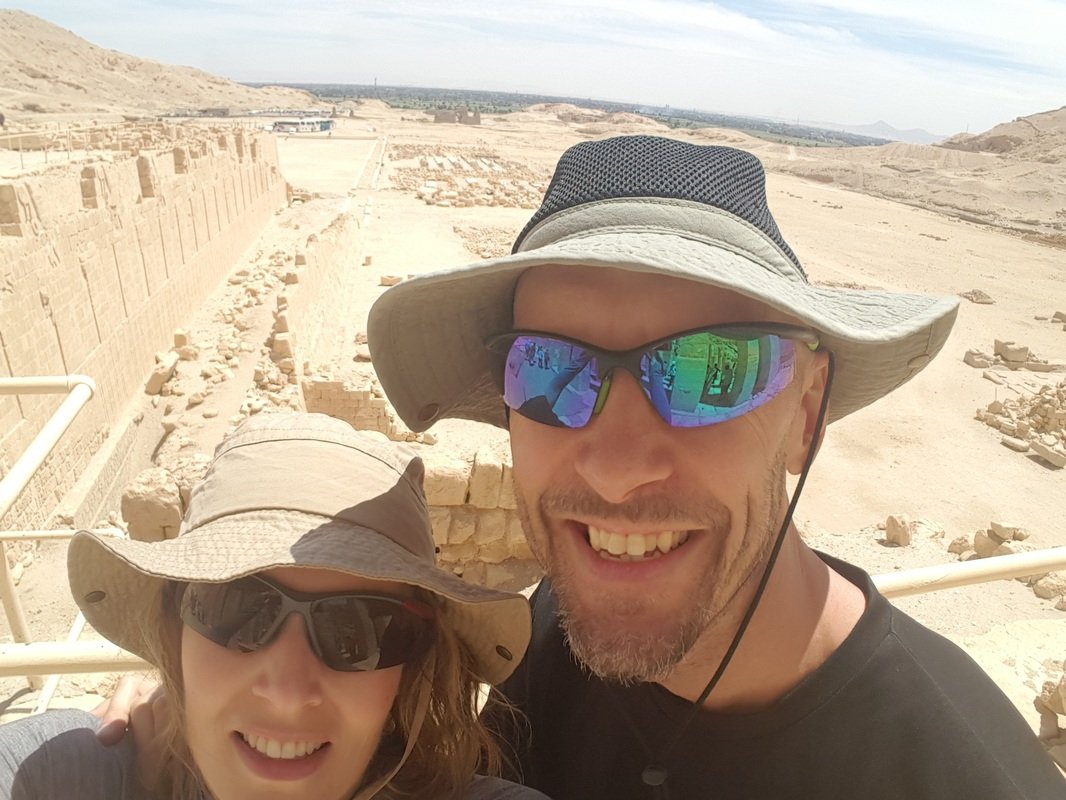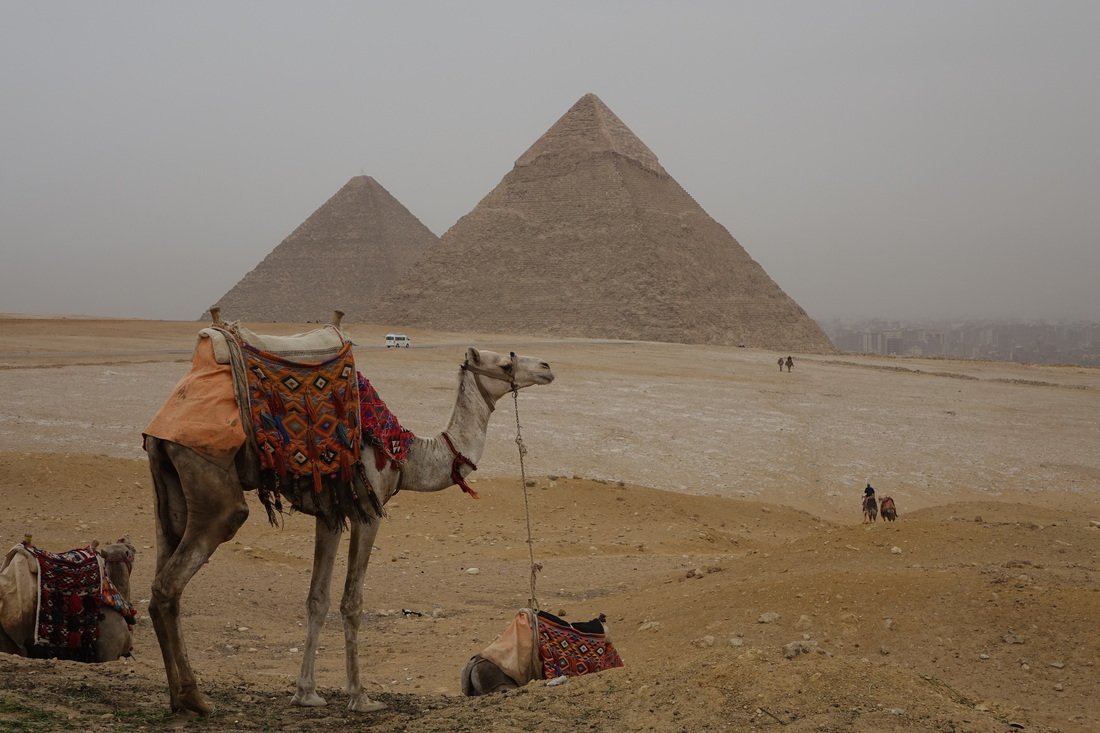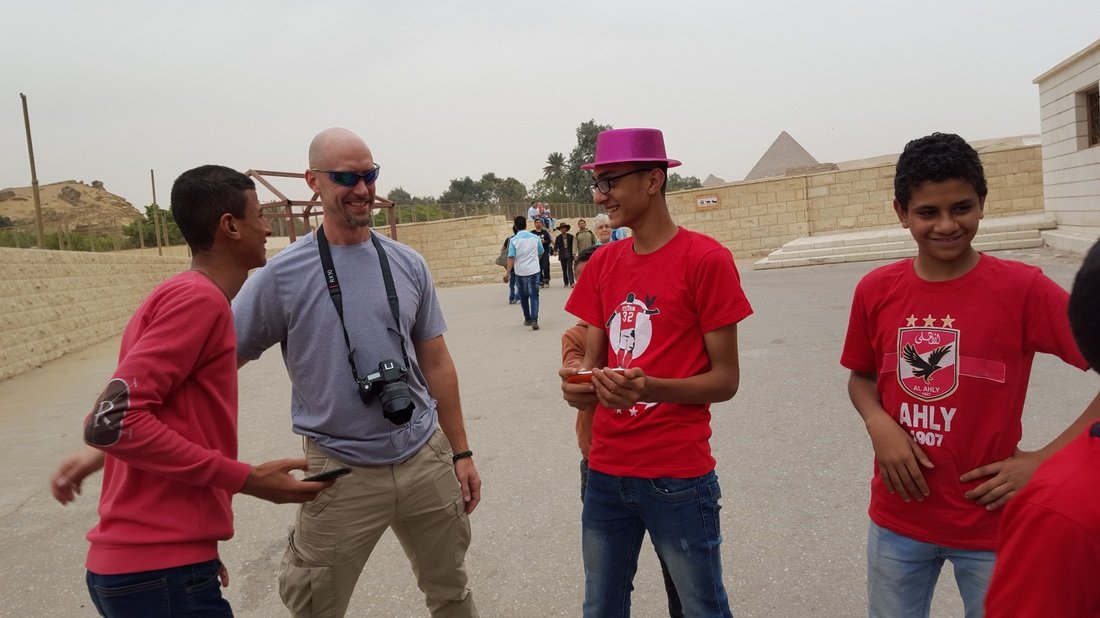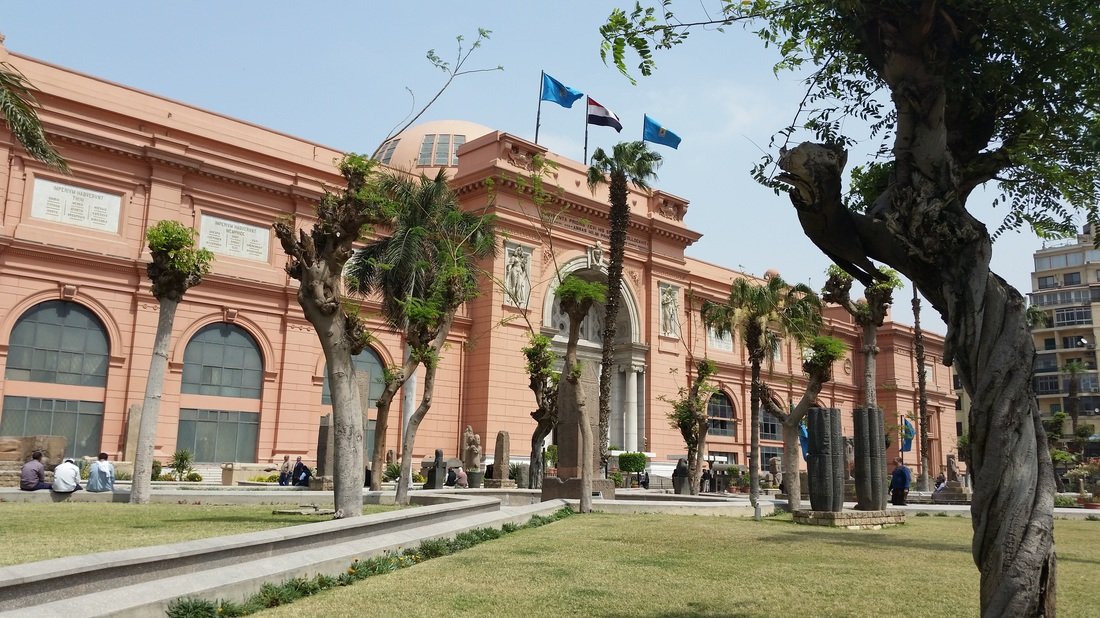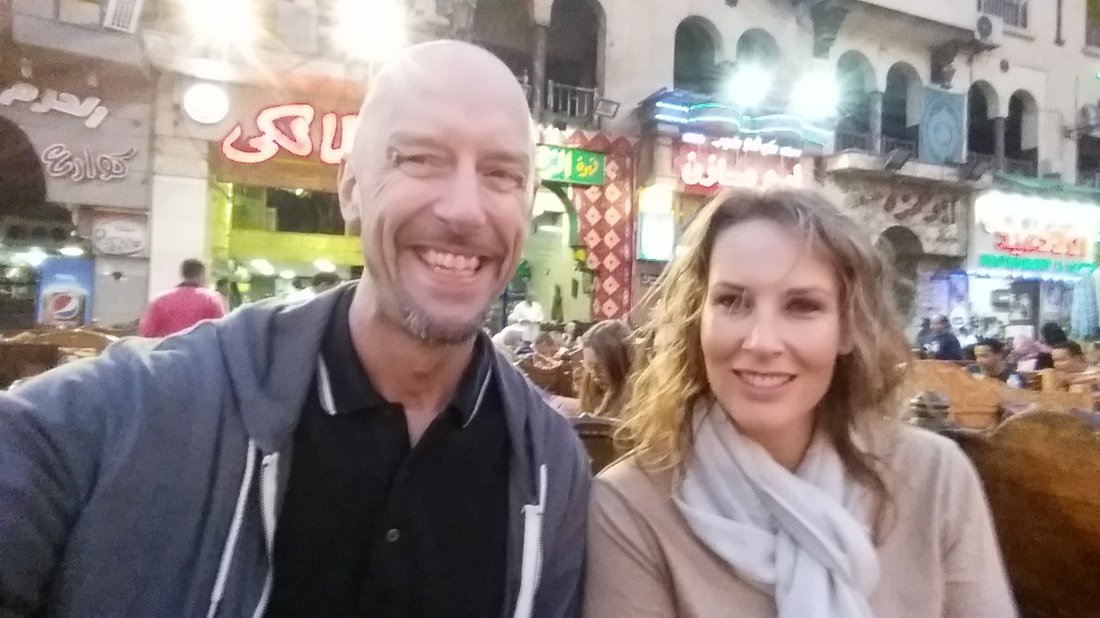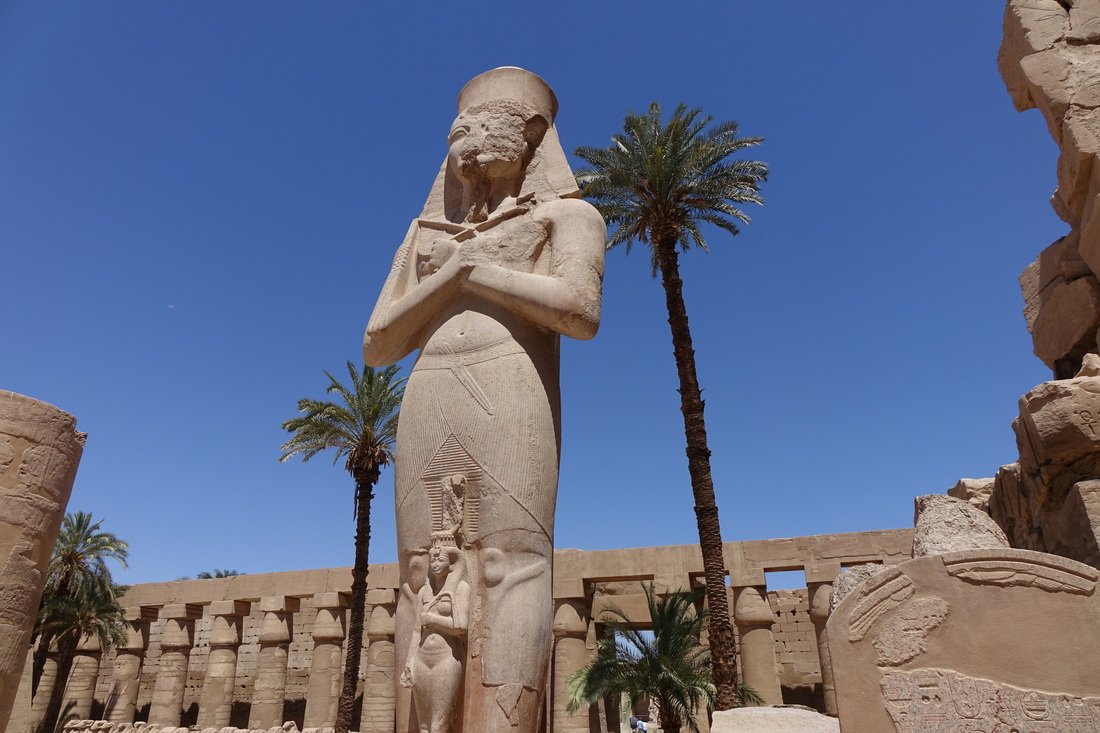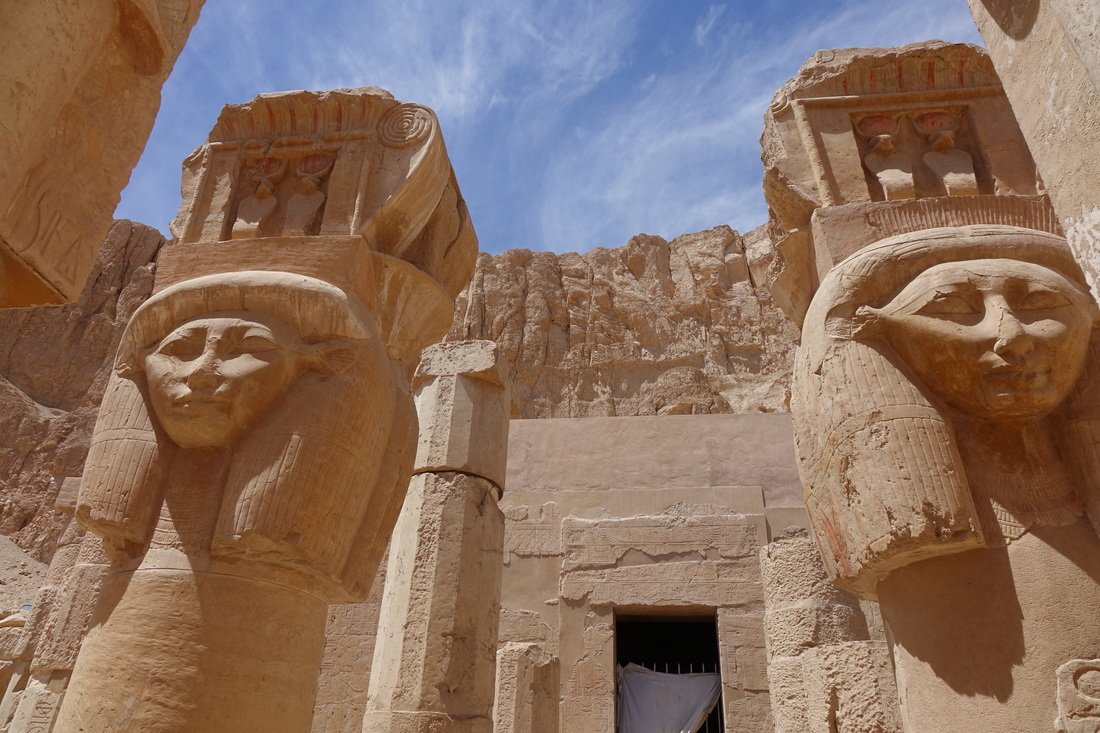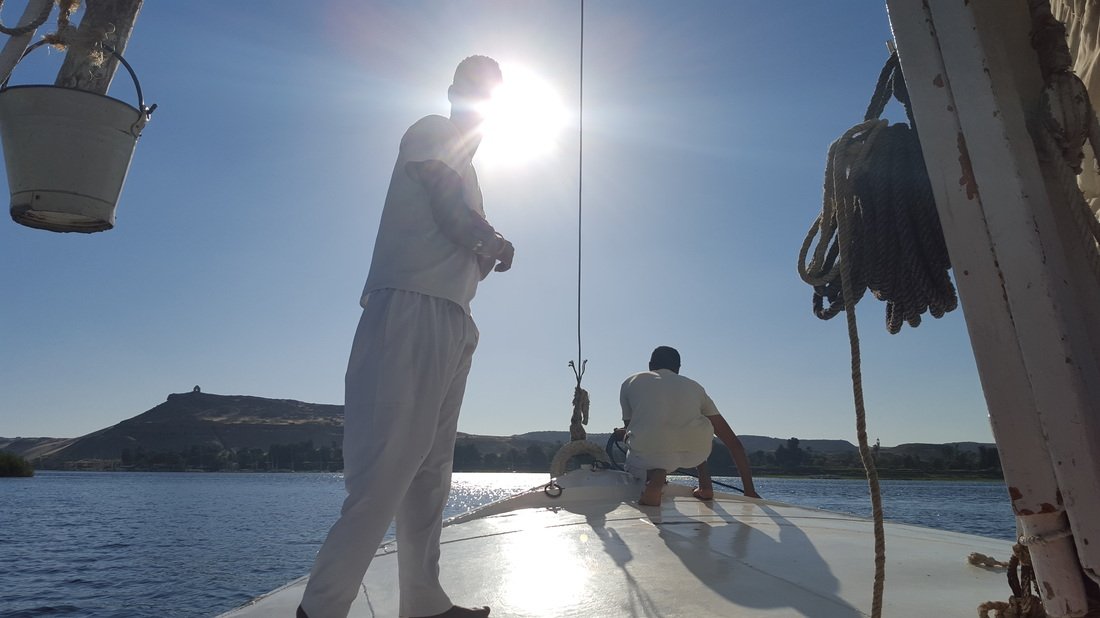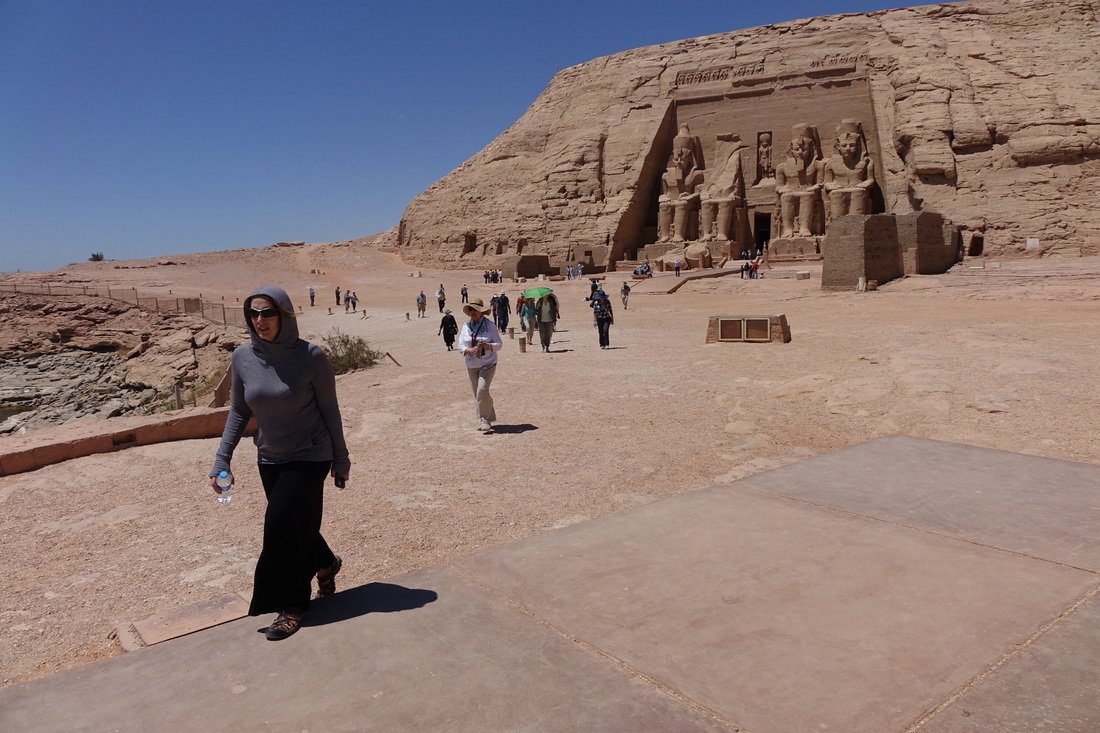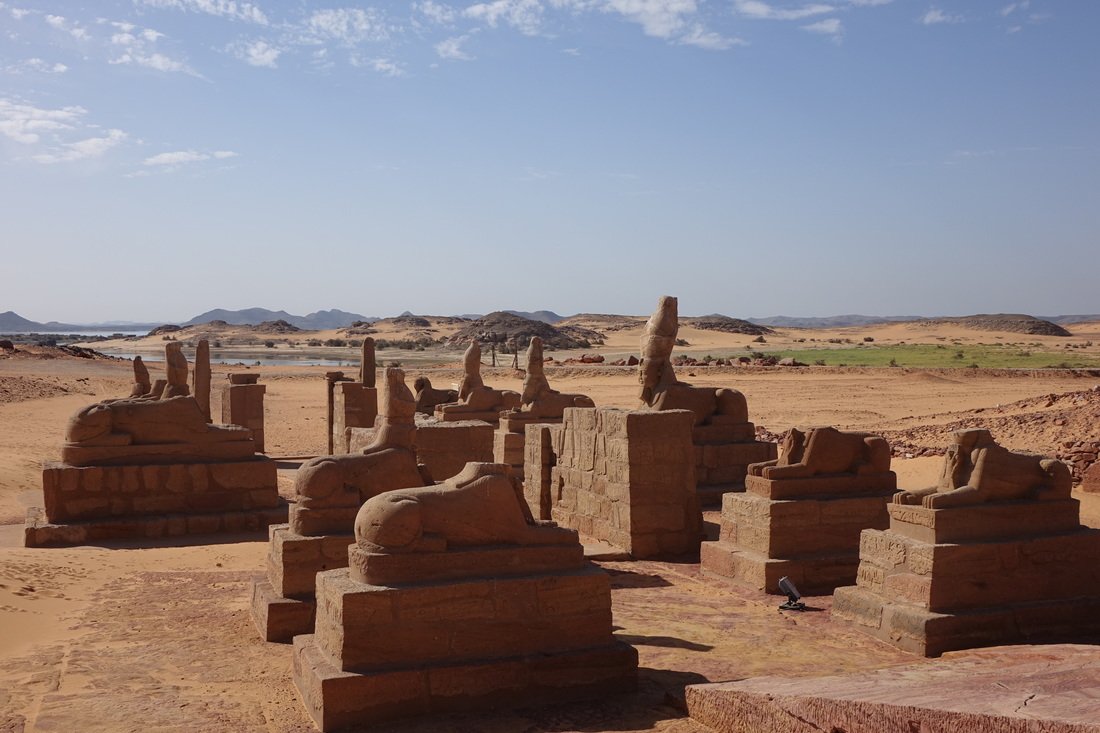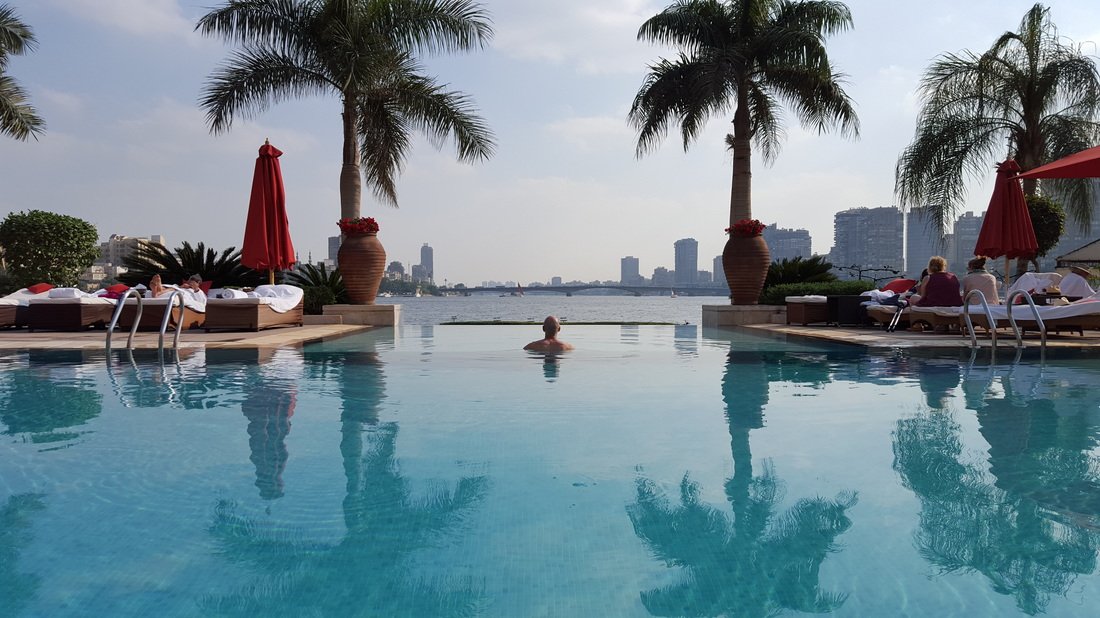4 Reasons a Viking Cruise in Egypt Is the Best Way to See this Special Place
A trip to Egypt, for me, was always one of those complicated things. It's a destination that I have always read and heard so much about, whether in school books or movie depictions of Ancient Egyptian times. But it sits in such an unfamiliar region of the world to me and owns such a complicated history of political upheaval and military dictatorships that I didn't really know how to go about a journey to Egypt that I could feel completely comfortable with.
But that's the point, isn't it? We're never going to feel completely at ease with any place we might travel these days, are we? So, you either get busy traveling … or miss out on some of the great experiences available in this world.
Viking River Cruises' "Pathways of the Pharaohs" itinerary proved to be the perfect way to see all the highlights of Ancient Egypt while putting me at ease about my safety. I think a cruise tour is the perfect introduction to Egypt or any place that you might otherwise feel a bit apprehensive about. Here is why:
1. The Program Director
Our Egyptologist Mohamed was incredible. He has been doing these types of tours for 22 years and can answer almost any question you have.
Our leader on this trip was Mohamed Osama, an Egyptologist who has been leading tour groups in his country for 22 years. We would not have known where to really start to get the most out of our 12 days in Egypt. Luckily, it was all planned out for us, and Mohamed turned out to be the most excellent guide to show us the incredible sites. But the best part is how much he knows about Egypt, especially the history of Ancient Egypt, and how he could explain it to us in an interesting way.
Our group was completely enthralled by the stories of the famous pharaohs, gods, queens and other characters from many thousands of years ago, as well as discussions of important events in the modern history that are still at work shaping the culture and political structure of the country to this day.
Mohamed was extremely flexible is adjusting his conversations to fit the needs of our group of 29 Americans and Canadians. He also offered a complete rundown of how our day would proceed and a look ahead to the next day on the itinerary. After the first couple days, it was obvious how much we would come to rely on his presence -- some became a bit spoiled and harassed him at every turn for the most minute items, in fact. I'm not sure how he handles this while still smiling all the time.
"I love my job so much," he said when I asked him how he enjoys his work. He is one of three Egyptologists who Viking uses for its cruises, and Mohamed says they all are as knowledgeable as he, but I find that hard to believe.
Mohamed also did a wonderful job helping us navigate the nuances of everyday life as a tourist in Egypt. I'll give you examples as I go along with the journey as it unfolded. Hint: You need to be aware about the public toilets, helpful staffers at the sites and what it means to accept a shop owner's business card.
2. The Historic Sites
The Viking Cruises itinerary starts when you arrive in Cairo for three days of activities. We arrived late on a Friday and went straight to our hotel on a shuttle bus (this is when we first met Mohamed) to check in for the weekend. The next morning, we were off and running with our Egypt exploration, and we hit the big icons of Cairo right away.
Our hotel was the Sofitel El Gezirah located right on the Nile River, which was awesome. We couldn't believe we were in Egypt and about to start this incredible journey. Cairo is a modern and busy city, with 20 million of the nation's 90 million people packed into the urban centers. We saw Hardee's, Papa John's, TGI Friday's, KFC and Pizza Hut and many other brands you would see around the U.S.
The important archaeological site of Saqqara, home of the famous Step Pyramid, was our first stop. We had arrived to the Sahara! This is one of the most extensive dig sites in the country and is the burial location for Memphis, the capital of Ancient Egypt. The Step Pyramid, which you can't get close to because of extensive scaffolding and ongoing restoration work, is the oldest pyramid of the 123 in Egypt.
We then went to see the world-renowned Pyramids of Giza, which includes the imposing Great Pyramid. Mohamed informed us throughout the day at each stop what the various rules of photography were for each temple and the tipping customs for people who approach and ask to help you with a photo (taking a picture of you, them, a carving, etc.) Believe me, the rules are always changing depending on what is allowed for photography at each tomb or temple, and he did a wonderful job giving us a proper heads up so we wouldn't feel caught off-guard or uncomfortable when confronted by an aggressive person who was out to make a buck.
At the Great Pyramid, you can pay an extra fee to take a walk up the long passageway to the tomb high up into the center of the legendary structure.
Viking treats passengers to a camel ride, too, at the Pyramids of Giza. Brave enough to mount these inscrutable beasts? You can get that iconic picture of your trip to Egypt! You'll see plenty of camels roaming around just waiting to get their picture, too. Don't worry, they aren't shy. I found one camel who really knew how to work it for the camera, in fact.
A visit to the famous Sphinx capped off a whirlwind first day of sightseeing, which also included a stop at a carpet-making school to see how young apprentices learn the craft and a valuable vocation. The noseless Great Sphinx, with the body of a lion and head of a human, is perhaps the most enduring and fascinating image people associate with trips to Egypt and its ancient antiquities. This ended up being one of my favorite spots of the entire trip because of the fun interactions we had with other visitors to the Sphinx, including many Egyptians and others from countries nearby. Being white Americans, we stood out and became some kind of attraction for many young brown-skinned people of the Middle East who earnestly asked whether they could have their pictures taken with my wife and myself. I'm certain my wife was the more interesting photo subject, but I enjoyed the attention, too.
Colleen and I both were approached by charming youngsters who wanted to meet us and snap a pic.
Smiles are the best diplomacy, and this is a big reason why we travel. To connect. To make the world a better place. To spread the word worldwide that Americans aren't so bad. To connect with people face-to-face. A note on some rules here: Staffers at the sites, including guards holding AK-47s, are often willing to relax photo restrictions if you ask permission. If they say OK, they'll expect a tip (bribe). We soon got the hang of this practice and were able to adjust as needed for the rest of the trip.
Also, when you go to the restrooms in Egypt, you'll either see an attendant, or one might follow you in. Attendants might hand you some toilet paper or a paper towel after you wash your hands or do nothing at all. Regardless, a tip of one Egyptian pound (the equivalent of about 10 cents) is expected. Mohamed also made this clear and handed out a stack of five of these hard-to-acquire coins to each Viking guest on the first day of the program.
The Egyptian Museum in Cairo is filled with fascinating artifacts that detail the ancient history of the region.
On Sunday, we went to the Egyptian Museum. This place houses an immense number of relics and statues, including hundreds of mummies of humans and animals. An additional fee of about $5 is required for each camera or device that you plan to use in the museum to snap pictures. Inside, you can also access a mummy room (humans) for an additional fee. The animal mummy room is free. The room with King Tut's jewels and funeral mask is free to browse but no photos are allowed, even if you paid the camera fee.
The alabaster Mosque of Muhammad Ali at the Citadel in Cairo.
Mohamed briefs you on all the rules, which can be hard to interpret, and he calls himself your personal "genie," providing currency exchange services throughout the trip and making runs out for medicines or any other thing he can help with as needs arise. After the Egyptian Museum, we explored the Mosque of Muhammad Ali at the Citadel in Cairo. Known as the Alabaster Mosque, it was completed in 1848 and is an impressive and beautiful complex that stands as the one of the city's most recognizable structures.
We enjoyed our evening in a cafe in Cairo, sipping tea and watching the vibrant scene.
We took the optional evening excursion, which was a walking and shopping tour at Khan el Khalili Square, a major souk in the Islamic area of Cairo, followed by a traditional Egyptian dinner at a fancy restaurant. This was a fantastic option that I recommend. The shopping is fun, and we settled in at a comfy outdoor cafe with a cup of tea to take in the scene on a warm, pleasant night. This put us in the heart of Egyptian life on a Sunday night, watching friends and family stroll about the square, which is anchored by an important mosque.
And so it continued, one fabulous new experience after another.
A statue at the massive Temple of Karnak.
On Monday, we flew to Luxor to start the sailing portion of the program. In the morning, we toured Karnak and Luxor temples. The Temples of Karnak are thought to be one of the world's largest temple complexes, and work on the main temple began in the 16th century B.C. and continued for 1,300 years. The Temple of Luxor is connected with Karnak by a long boulevard still visible today that features thousands of sphinxes (3,000 in the two-mile stretch). Both sites are awesome for their size and the number of tall columns and preserved etchings.
Colorful carvings are still visible after thousands of years at sites all over Egypt. Here, they are seen at the Temple of Hatshepsut.
Fully impressed by what we had seen on our first two full days, we arrived at our ship, MS Mayfair, to get ready for our cruise. However, we would be in Luxor for the night and next day for more fun before setting sail. An optional balloon ride over the Valley of the Kings was scratched because of windy conditions. That was a disappointment but unavoidable. I have never been on a balloon ride and expected it to be awesome.
We did go tour the Valley of the Kings later that morning, though, and the incredible complex of 64 tombs of Egypt's ancient rulers cut deep into the mountainside is a don't miss attraction in Luxor. Our entry ticket allowed us to enter three tombs, and Mohamed suggested a nice variety. An additional fee ($10) gets you into the small tomb of King Tut, which is popular but not especially interesting except to be able to say you went in there. Plus, Tut's mummy is still there, enclosed in a glass case. Be warned: Photographs are not permitted in the Valley of the Kings, and guards will ask to see cameras and cell phones to make sure you're not snapping pics. Leave your cameras and phones behind to be safe.
Images of Hathor, an Ancient Egyptian goddess who personified the principles of joy and feminine love, are seen at the Temple of Hatshepsut.
All the tombs we visited were remarkable for how stunning the colors in the drawings remain. The original artwork, just inches away, meticulously created thousands of years ago with inks mixed using eggs, honey and minerals. We also toured the nearby Habu Temple, Temple of Queen Hatshepsut and Colossus of Memnon before getting back to the MS Mayfair. You can see how this is going. Temples, temples and more temples. Each with a unique backstory and each standing preserved for centuries in the dry, hot desert. Note: Always wear sunscreen, bring a hat or umbrella and drink plenty of water.
In the afternoon, we started sailing the Nile River, stopping at Esna overnight to sleep and learn about the lock system of the Nile with an onboard commentary on the top sun deck. In the morning, we cruised to Edfu, where we took a horse carriage ride to the city's Edfu Temple, one of the most-complete and well-preserved houses of worship in Egypt. The carriage ride through town for about two miles back and forth to the boat was a highlight and fun way to zip through the busy town. At the temple, you'll find vendors eagerly greeting you hoping to steer you into their shops. Note: If you accept a business card, they will consider that a promise to shop when you are done with your temple tour.
A horse carriage is your transport to Edfu Temple.
We sailed in the afternoon and arrived at Kom Ombo for an evening tour of the temple there dedicated to the crocodile god Sobek. A small museum nearby is worth a stop to see well-preserved mummies of 2,000-year-old crocs. Later that night, we sailed to Aswan, a city known for the High Dam that was built there in the 1960s, which changed the flow of the Nile and Egypt as a whole. The next morning, we took a boat ride to Agilkia Island to view Philae Temple, which was moved to this spot from a location in the Nile to save it from flooding when the dam project threatened to submerge it.
Philae Temple was relocated to save it from flooding when the Aswan High Dam was built.
This was the first of many temples and sites we would be visiting with the same story — being relocated because of the creation of Lake Nasser from the High Dam. The whole saga of these ancient artifacts and important pieces in the puzzle of human history is an amazing example of nations collaborating. The massive undertaking took place in the 1960s throughout Nubia along the Nile.
Viking arranges an afternoon ride on the Nile on a traditional felucca sailboat when in Aswan.
After Philae Temple, we toured the Nubian Museum, and in the evening, we enjoyed a sunset ride on the Nile in a traditional Felucca boat, which has triangle sails. Crew treated us to a relaxing ride past top sites near the river in Aswan, as well as a few songs (we all had fun singing along).
In the morning, it was time to fly again. We said goodbye to MS Mayfair and the Nile to take a plane to Abu Simbel and start our Lake Nasser cruise on MS Omar el Khayam. Abu Simbel is a city named for the Abu Simbel Temple, a massive complex set in a mountainside (moved there, of course, from its prior location). This was the flagship project of the temple relocation plan in the 1960s, and you can view a documentary onboard the ship. Abu Simbel Temple is dedicated to Ramses II, Egypt's most famous pharaoh, and his favorite wife Nefertari.
The incredible Temples of Abu Simbel. Make sure to bring a hat and plenty of water.
A daytime visit precedes your check-in at the ship, and a light-and-sound show at night gives you a second chance to view the site before leaving Abu Simbel the next morning. Photos are prohibited inside the two temples, but you'll get plenty of good shots from outside. The structures are notable for their tall statues of Ramses II and Nefertari at the entrances of each temple. Note: This site is an entirely open area in full sunshine. Be prepared with sunscreen, a hat and water.
Our Second Viking Cruise in Egypt: This Time on a New Ship
On this trip, we sailed on the former Viking charter ships in Egypt. Since then, Viking built its own luxurious ships, Viking Osiris and Viking Ra, Viking Hathor, Viking Aton and Viking Sobek, specifically for Nile River cruises.
Check out the following videos highlighting Viking Osiris and our wonderful second cruise in Egypt with Viking that we took in 2022.
Now back to our main post …
You'll sail for three days on Lake Nasser, and much of the surrounding views are boring — strips of brown shoreline for miles. You stop in the lake for a 15-minute talk about Kasr Ibrim Fortress, which is best viewed from the sun deck as Mohamed explains the history of the site, which is the only structure on Lake Nasser still in its original location. The waters are about 200 feet deep, and the fortress sits safely on the peak of a mountain. The site contains an 8th-century church atop the remains of a fortress and is closed to the public.
Sailing continues past the fortress site, and Omar el Khayam anchors for a visit to — wait for it — yes, another temple. Amada Temple was moved as an entire piece (on rails) about four miles farther away from the Nile because it contains well-preserved colorful carvings on plaster that could not be cut. It is a stunning site reached by a small-boat ride from the ship to shore. You'll also visit the Temple of Derr during this stop, which requires a little bit of walking along sandy desert shoreline and a path between temples. You can hitch a ride on a donkey cart ($1) if your feet are getting tired. You also can hold a crocodile, cobra or scorpion if you like. Vendors there are peddling this option for a buck or two.
Coming ashore from Lake Nasser to Wadi el Seboua.
Wadi el Seboua Temple is in the dry and hot Western Desert.
The final stop on Lake Nasser the next day visits three temples, reached again by boat ride to shore at Wadi el Seboua. The main Wadi el Seboua Temple has six sphinxes at its entrance and is majestic for its location tucked between the edge of the Western Desert and Lake Nasser. Another stroll for about .6 miles (or donkey cart ride) brings us to the Temple of Dakka and Temple of Meharakka, which is unique because it has no carvings or much else interesting going for it. I would definitely say that we were all templed-out by this time in our journey.
We sailed that evening and arrived back at Aswan. We got off the ship in the morning for a tour of the Temple of Kalabsha, which is located at the edge of the High Dam and was built around 30 B.C. during the Roman era and never finished. We also stopped on top of the High Dam for a look around, spotting where the Nile's flow ends on one side and where Lake Nasser spawned on the other. The dam accounts for 25 percent of the electrical power in Egypt and is used to control flooding and agricultural seasons.
After a stop for lunch at an Aswan hotel, we were off to the airport for our return to Cairo. We had a goodbye dinner at our accommodations, the Intercontinental City Stars, and all went our separate ways to get some rest before our flights home.
3. The Ships
MS Mayfair. Your cruise ship on the Nile for four nights.
Viking Cruises does not own the MS Mayfair or MS Omar el Khayam. The line leases cabins on the boats that are owned by the Egyptian government, so the experience is different from what you might know from a Viking River Cruise on the Rhine or Danube in Europe. They are fine, I would say, for what they are needed to do. Mayfair (150 passengers capacity) is five decks tall, with cozy rooms and a fantastic sun deck. I would spend most of my time up there on its lounging mats in the shaded areas on turf grass, dipping into the pool and two hot tubs. Mayfair has no elevator, gym or spa. An elliptical machine and exercise bike are located on the sun deck, and we had no problem getting in a workout using our handy exercise bands, too.
Omar el Khayam is a bit bigger (160 passengers on six decks), with large rooms that all have balconies. The ship also has a big pool and two hot tubs on its massive sun deck. We couldn't use our balcony on this ship because of the swarms of insects (bring bug spray). This ship has a large fitness center with plenty of equipment and two treadmills, as well as a full-service spa offering reflexology, facials and full-body massages. You have a bit of free time on the ships during the program, and I used it to grab a refreshing nap or workout and get my sleep and eat meals mainly. The vibe is very relaxed onboard, and many people like to check out the shop on each ship that sells scarves, clothes, jewelry and souvenir-type items.
Each ship also hosted an "Egyptian Night" with Nubian dancers for entertainment during which audience participation is greatly encouraged. One performer — a chief-like character — on Mayfair puts on an improv act using passengers that is so hilarious you'll have a sore face from laughing so hard. The ships also host an afternoon tea time on the sun deck, with tasty pastries -- and even crepes! When we were cruising, each ship had only about 50 to 60 passengers onboard (33 percent capacity). Dozens of other ships sat anchored in ports all along the Nile, inactive for years since the 2011 revolution and waiting for cruisers to return. Your fellow passengers outside the Viking group will probably be English, German, Australian and Japanese. We also found the sites we toured to be light on tourists.
This made it a pleasant experience to visit the sites without throngs of people all around. But it's because many European tourists have not been quick to return to Egypt since the uprisings of five years ago, according to people we spoke to in Egypt. These same people and many others told us how much they love Americans and wanted us to tell everyone to come to Egypt. There you go!
It was nice to not be overrun with people at the sites. We were able to explore them at a leisurely pace and get good photos. But I can also see how the slowdown in tourism creates a hardship on the economy and the lives of residents.
You get intermittent Wi-Fi service (included) on Mayfair, but there is no Internet connectivity on Omar el Khayam.
4. All the Rest
Passengers are treated to tea time and pastries daily on Mayfair.
The food offerings were bland at best, except for our dinners on Egyptian night. I would have liked to have more variety and regional specialties available. The ships offered omelet stations, which were fine, and a few fruits and cereals. The selection of breads was a saving grace at every meal, though. I loved those breads and pastries.
Both Colleen and I actually lost weight during our trip, which I would guess has never happened before. We also were warned that we would get sick when traveling in Egypt. I was steadfast in my belief that it wouldn't happen to me. I only drank bottled water and used bottled water to brush my teeth. I also brought along protein bars and some other packaged snacks from home to supplement my food needs while we were out touring each day. But I did indeed come down with a case of "mummy tummy" as did at least 20 others in our group of 29. We each were struck at different times during the nearly two weeks and with various ailments (stomach, fever, cold, sinus) that affected us for a day or two. This seems to be a typical problem for travelers, and I am at a loss for telling your how to avoid it. But I just sucked it up and rested in my room for a day — eating bananas and bread and drinking water and a special tea the ship's staff brewed for me — and I bounced back quickly.
Your safety and comfort is a priority for Viking and the Egyptian government. Western tourists are treated extremely well, so you can put your mind at ease if you have any concerns about this when weighing whether you should take a cruise in Egypt. We had a security detail (well-armed) with us at all the sites; he traveled with us on the shuttle buses.
Your program director will schedule a stop at an ATM during your trip and escort you and give any help you might need to withdraw extra money. This comes in handy because you'll find that you need extra cash to tip crew on the ships (cash only) and your security guard and bus driver as well as any other people along the way. Note: Tipping is a big deal in Egypt, and you are not-so-subtly reminded of who you should be tipping. Mohamed also did a great job of telling us who already has been tipped by Viking for certain services and how not to get duped into tipping these people who would seek to double dip. Haggling, too, is part of any shopping experience, and Mohamed told passengers what the items were actually worth (and cheerfully consoled those who had "made a merchant very happy" by overpaying).
The pool at the Sofitel hotel in Cairo looks into the Nile. Sofitel is your pre-cruise accommodations for three nights.
The nights you stay at hotels in Cairo at the beginning and end of the trip include meals — breakfast and dinner buffets — and the facilities are quite luxurious. You'll also be treated to a couple buffet lunches at hotels during your long days touring in Cairo and Aswan.
I hope this review was thorough enough to be helpful and give you an idea why you should consider a Viking Cruises trip for a journey to explore Ancient Egypt. We enjoyed it more than I expected and learned so much about the history of a country and region that I had been woefully uneducated about.
I love when trips can lead to revelations. That's why we do this, right?
Till next time, thanks for reading.
Travel happy!
JR
Viking Cruises hosted me on its "Pathways of the Pharaohs" journey. All opinions you see here, as always, are my own.

